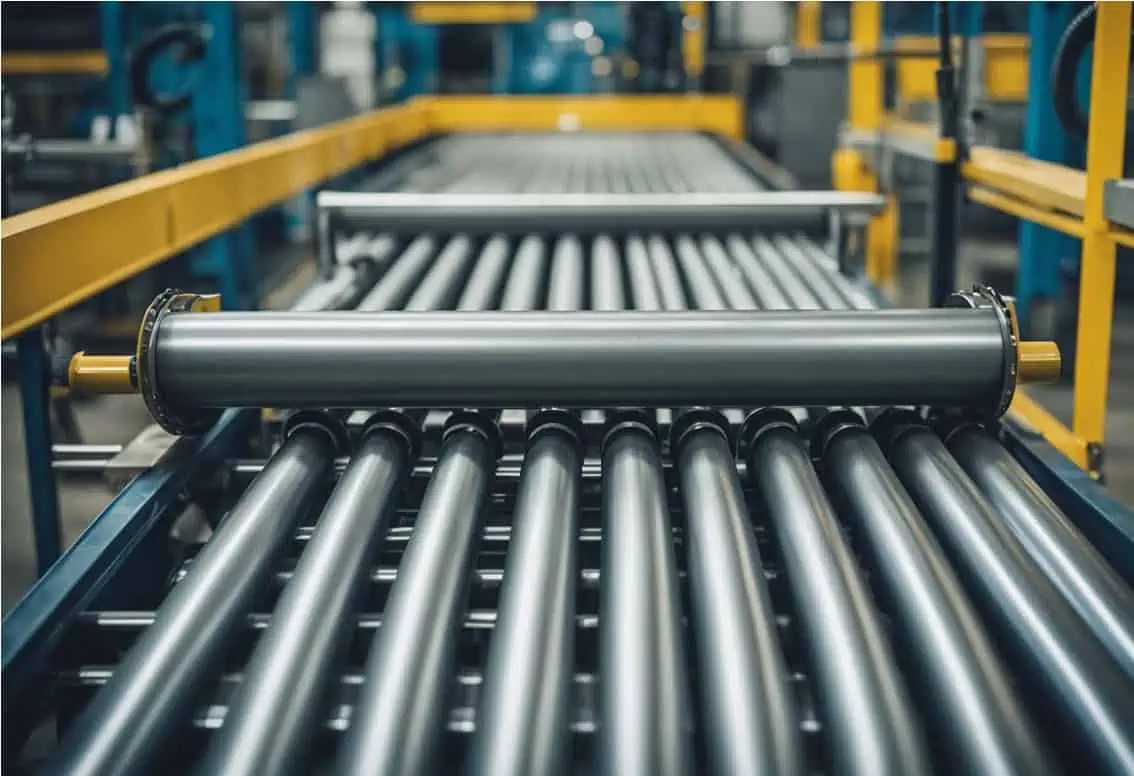Conveyor rollers play a crucial role in the industrial sector by facilitating the movement of heavy goods from one place to another. These rollers are designed to withstand a significant amount of weight and pressure, but they can wear out over time due to constant use and lack of maintenance.
Regular maintenance of conveyor rollers is essential to ensure their longevity and prevent costly breakdowns.
Regular inspections can help identify potential problems before they become serious issues. It is recommended to replace damaged rollers as soon as possible to prevent further damage to the conveyor system.
Regular Inspection and Cleaning
Regular inspection and cleaning of conveyor rollers is crucial for extending their lifespan and ensuring optimal performance. By performing routine maintenance, warehouse operators can prevent costly downtime and reduce the risk of accidents.
Inspecting for Wear and Damage
Inspecting conveyor rollers for wear and damage is an essential part of regular maintenance. Warehouse operators should check rollers for signs of wear such as flat spots, pitting, or cracking. Any damaged rollers should be replaced immediately to prevent further damage to the conveyor system and ensure the safety of workers.
Cleaning Procedures
Cleaning conveyor rollers is also an important part of regular maintenance. Dirt, debris, and other contaminants can cause rollers to malfunction or fail prematurely. To clean rollers, operators should follow these simple steps:
- Turn off the conveyor system and unplug it from the power source.
- Remove any debris or buildup from the rollers using a brush or vacuum.
- Wipe down the rollers with a clean, damp cloth to remove any remaining dirt or grime.
- Allow the rollers to dry completely before restarting the conveyor system.
Scheduling Maintenance
Scheduling regular maintenance is crucial for extending the lifespan of conveyor rollers. Warehouse operators should establish a maintenance schedule that includes regular inspections, cleanings, and replacements as needed. By staying on top of maintenance, operators can prevent costly downtime and ensure the safety of workers.
Proper Installation and Usage
Correct Installation Techniques
The first step in installation is to ensure that the rollers are the correct size and type for the application. It is also important to ensure that the rollers are installed in the correct orientation and alignment. This will help to prevent excessive wear and tear and ensure that the rollers operate smoothly.
When installing warehouse roller, it is important to ensure that they are securely fastened to the conveyor frame. This can be achieved by using the correct type of bolts and nuts, and by ensuring that they are tightened to the correct torque specifications.
Avoiding Common Operational Mistakes
Proper usage of conveyor rollers is just as important as their installation. One common mistake that can lead to premature wear and tear is overloading the conveyor. It is important to ensure that the weight of the items being transported does not exceed the weight capacity of the conveyor rollers. This will help to prevent excessive stress on the rollers and ensure that they operate smoothly.
In summary, proper installation and usage of conveyor rollers is essential for extending their lifespan. By following correct installation techniques and avoiding common operational mistakes, warehouse rollers can operate efficiently and effectively for years to come.
Article and permission to publish here provided by Georgy Nikolin. Originally written for Supply Chain Game Changer and published on February 20, 2024.
Cover photo provided by Georgy Nikolin.

